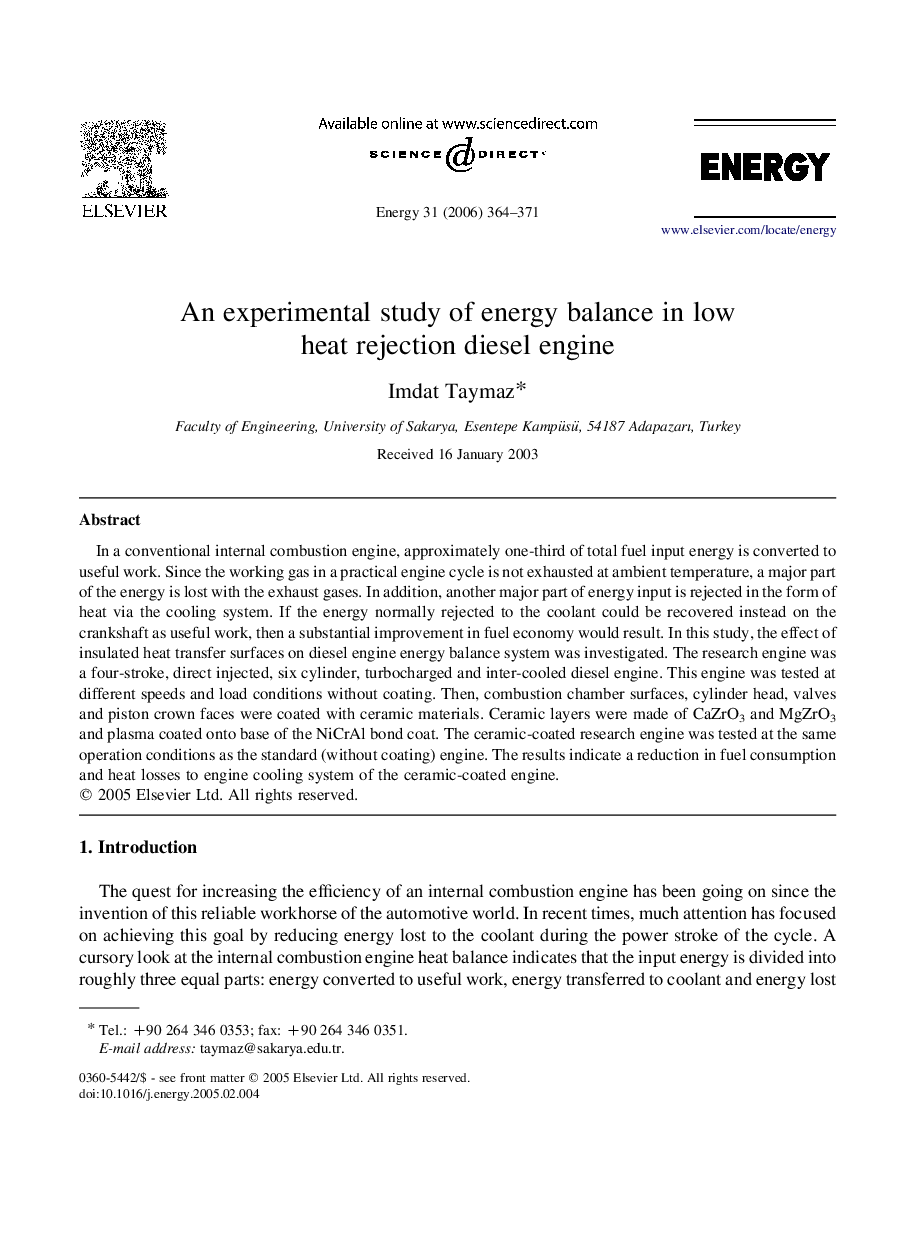| Article ID | Journal | Published Year | Pages | File Type |
|---|---|---|---|---|
| 1736575 | Energy | 2006 | 8 Pages |
In a conventional internal combustion engine, approximately one-third of total fuel input energy is converted to useful work. Since the working gas in a practical engine cycle is not exhausted at ambient temperature, a major part of the energy is lost with the exhaust gases. In addition, another major part of energy input is rejected in the form of heat via the cooling system. If the energy normally rejected to the coolant could be recovered instead on the crankshaft as useful work, then a substantial improvement in fuel economy would result. In this study, the effect of insulated heat transfer surfaces on diesel engine energy balance system was investigated. The research engine was a four-stroke, direct injected, six cylinder, turbocharged and inter-cooled diesel engine. This engine was tested at different speeds and load conditions without coating. Then, combustion chamber surfaces, cylinder head, valves and piston crown faces were coated with ceramic materials. Ceramic layers were made of CaZrO3 and MgZrO3 and plasma coated onto base of the NiCrAl bond coat. The ceramic-coated research engine was tested at the same operation conditions as the standard (without coating) engine. The results indicate a reduction in fuel consumption and heat losses to engine cooling system of the ceramic-coated engine.
